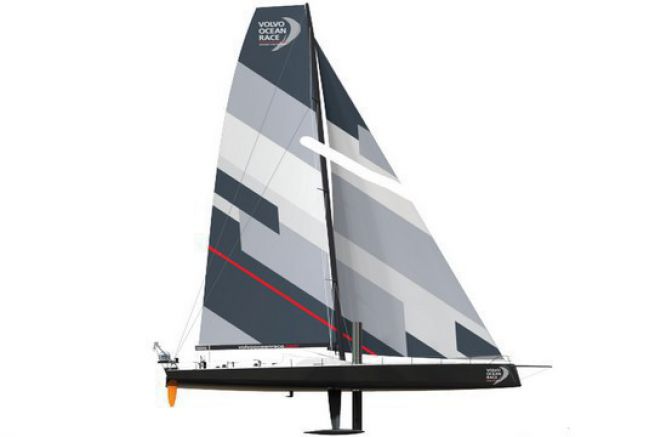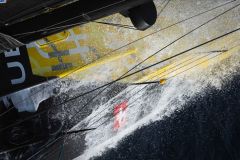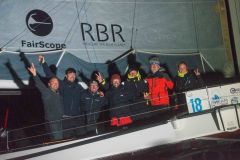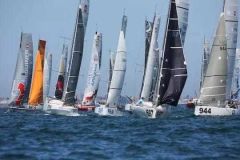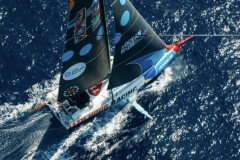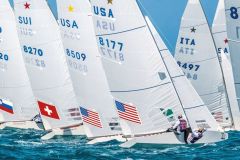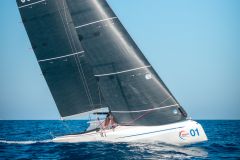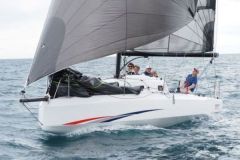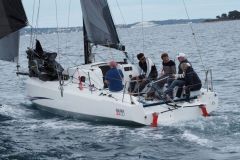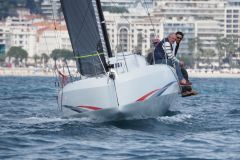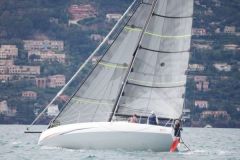A sailboat designed to be a racing machine
The Volvo Ocean 65 is 20.37 meters long and is a one-design boat, meaning it was built from a single set of highly controlled plans from Farr Yacht Design. The teams will all sail on the same boat. Four European shipyards succeeded each other in the creation of this model: Green Marine, Decision, Persico and Multiplast.
The decision to provide all teams with the same boat is based primarily on cost reduction, as there is now only one set of designs and one yard. The Volvo Ocean 65 will therefore be less expensive than the previous generation. Besides the financial aspect, the main interest is that the crew will have to be of high quality on the sea and will have no more excuses.
Numerous innovations for a high-performance and resistant sailboat
The Volvo Ocean 65 is equipped with a series of innovations that allow it to be fast and much more resistant, without altering its look. On the keel side, the draft has been increased from 4.5 to 4.7 meters. This increases the righting torque while reducing the weight of the keel to improve the boat's performance. The keel axis has also been reworked as it is now inclined for new performance, creating lift by reducing displacement and drag. The structure of the Volvo Ocean 65 has eight bulkheads, compared to four on a Volvo Open 70, which helps to strengthen it. The inverted bow is first of all aesthetic since it is the most photographed part of the boat, but it also allows to have less water at the front. Unlike the Volvo Open 70, this new model has two ballasts at the rear and a central one at the front.
Finally, let's not neglect the digital technology side since each boat is equipped with five fixed cameras and two link points, which will allow to cover the race from all angles. In the descent, cameras and microphones allow to observe the sailors as closely as possible. Remote controlled cameras, new systems and locations for sound recording, better protection against wind and water are the novelties of this year.
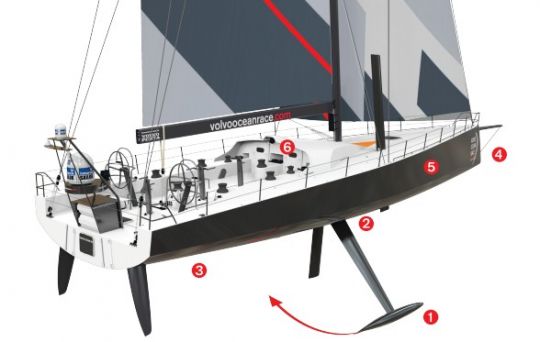
The one-design decided in 2012
Having a single boat for all crews dates back to June 2012. The official announcement was made during the stopover in Lorient, Brittany. The construction of the mold had started in August and the construction of the hull and deck in November. The first hull was delivered by Persico in Italy and the first deck by Multiplast in France to Green Marine, UK in March 2013.
The first deck and hull were assembled at Green Marine in May 2013. The first boat was completed in September 2013 and launched on September 23, 2013. So it was specifically for this 2014 edition that they were finalized.
| Hull length (ISO 8666) | 20,37 m |
| Length at waterline (plan) | 20,00 m |
| Overall length (including bowsprit) | 22,14 m |
| Overall hull width (ISO 8666) | 5,60 m |
| Maximum draft (Keel on CL) | 4,78 m |
| Displacement (empty) | 12 50 kg |
| Keel configuration | 40 degree canting keel with 5 degree tilt axis |
| Derivatives | Two daggerboards at the front, inboard triangulation |
| Safrans | Double fixed rudders âeuros mèches composit |
| Rear ballasts (wing tanks) | Two 800L seawater ballasts under the sides of the cockpit |
| Front ballast (CL) | A single 1100L seawater ballast at the front of the mast |
| Rigging height | 30,30 m |
| Rigging configuration | Double backstay and shrouds with deflectors |
| Length of the bowsprit | 2,14 m |
| Mainsail area | 163 m2 |
| Surface jib | 133 m2 |
| Upwind sail area | 468 m2 (main sail and Code 0 head) 296 m2 (mainsail and jib) |
| Sail area downwind | 578 m2 (mainsail and A3 |
Special report Volvo Ocean Race âeuros The French in five teams!
